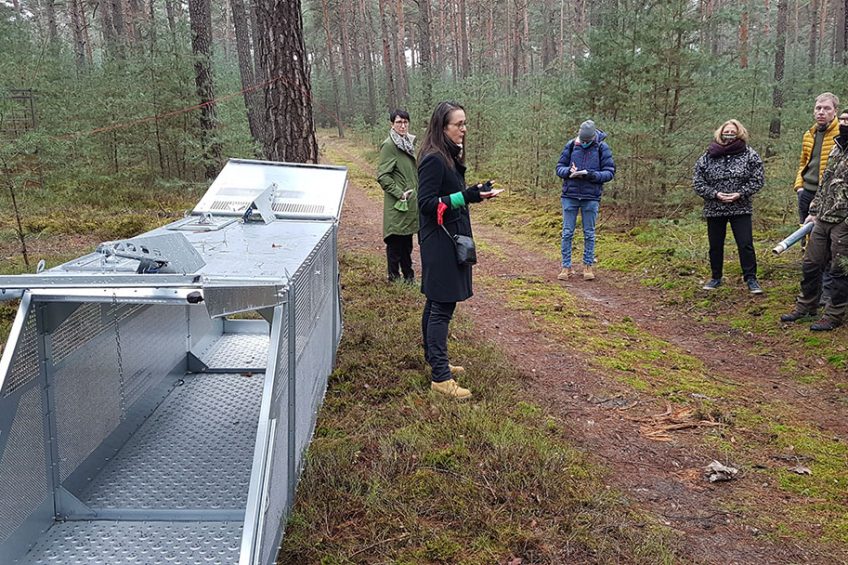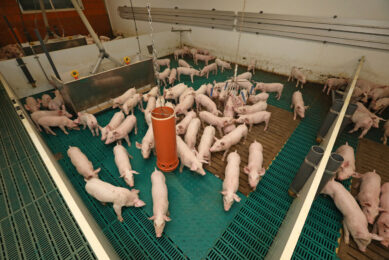ASF Germany: 1st white zone ready for wild boar depop

Germany is moving into a next phase to eradicate African Swine Fever from its wild boar population. Wild boar hunting is about to be resumed in the 1st “white zone” in Eastern Germany.
A white zone is a specific, double fenced zone around the 1st core area, where African Swine Fever virus has been detected in the local wild boar population since September. The 1st core zone is partly located inside the Oder-Spree and Spree-Neisse districts, both in Brandenburg state in Eastern Germany. Once the area has been completely isolated, the area can be depopulated from wild boar to avoid further transmission of virus. This is in line with procedures followed in the European Union – the Czech Republic and Belgium followed similar approaches to eradicate the virus.
Apart from this core zone, ASF has been found in 3 other areas as well. Construction of white zones around these areas is likely to follow, yet not completed. Apart from Brandenburg state, the virus has also been found in Saxony state, which is the state south of Brandenburg, also bordering Poland.
Wild boar depopulation
Earlier this week, 2 Brandenburg state secretaries state went on-site to learn about traps used in the wild boar depopulation. During their visit to the white zone near Neuzelle, Anna Heyer-Stuffer, Brandenburg state secretary for consumer protection and Silvia Bender, state secretary for agriculture, admired the nearly completed construction works: around 125 km of fence and more than 120 live traps.
With support of the military and many helpers on site, the white zone with around 250 km2 around the 1st core area was searched several times searching for dead wild boar.

Track the movement of African Swine Fever
For everything you need to know about ASF, from the latest outbreaks to controls stay up to-date…
Next step in combating the animal disease
In a press release, Heyer-Stuffer said, “The preparations were thorough, now we can take the next important step in combating the animal disease. The aim of our measures is the swift removal, as complete as possible, of the wild boar in the white zone, so that the chains of infection can be effectively broken and the ASF does not spread further west.”
Her colleague Bender said, “After the 1st confirmed ASF case, no hunting was allowed in order not to frighten the animals. Now the fence has been closed, the epidemic control will be resumed by hunting measures. It is important to remove the wild boar quickly and over a wide area. Fixed and mobile live traps are mainly used for this, in which the animals are caught and targeted. I am grateful to the hunters for their support.”

Within the defined restriction zones (core area, white zone, endangered area, buffer zone), the complete removal of wild boar in the white zone has top priority. In addition to trapping, individual and movement hunts are possible by order of the authorities. The state pays € 30 (below 30kg liveweight) and € 50 (over 30 kg liveweight) for the collection and delivery to a delivery point. Other game species may not be hunted for the time being.
Within the core area, trapping and individual hunting are also possible again. There are no hunting restrictions in the restriction zones outside the white zone.
Outbreak update of ASF in wild boar in Germany
The 1st ASF outbreak in wild boar was recorded in Brandenburg state in September. The official count on December 1 was 193 cases, of which 182 were found in Brandenburg state and 11 in Saxony state.
Consequences of ASF on German pigmeat exports
The consequences of the ASF outbreaks in wild boar in Germany are now dearly felt in the economic situation in Germany. The pigmeat shipments in September already showed a downward trend, wrote Top Agrar. Instead of roughly 60,000 tonnes that would normally go to China, now around 20,000 tonnes made it there.
In the remainder of the year, no further exports to China are being expected, leading to a total of almost 500,000 tonnes to China by the end of 2020, which will be 20% lower than in 2019.
A knock-on effect is likely to be felt in total export figures. Even though alternative markets can be found inside Europe for many pig parts, but the European market was already rather oversupplied and the marketing was sluggish. In addition, there are parts of the pig which are hardly in demand in Europe. Top Agrar mentions that all in all, the exports will decline by about 8%.











